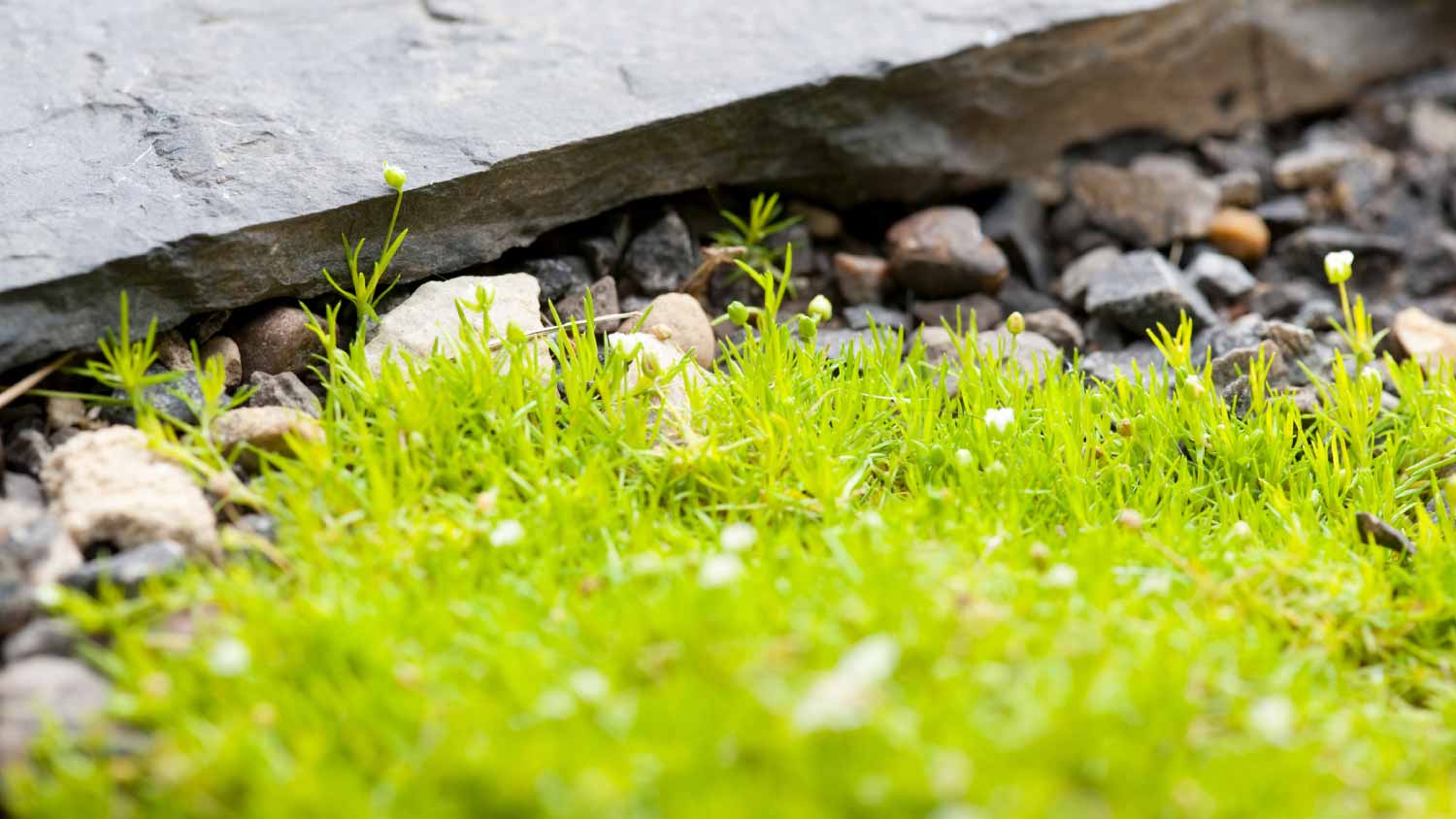7 Tips for Keeping Your Grass Green During a Drought
The grass isn’t always greener on the other side, but these tips can help


In the height of summer, most grasses need one to two inches of water per week.
Cool-season grasses need up to 20% more water than warm-season grasses.
Avoid disturbing drought-stressed grass.
Dethatching and aerating can help your lawn absorb more moisture.
If you experience frequent droughts, consider drought-tolerant grass or a xeriscape.
It’s no secret that droughts are hard on your lawn. According to recent reports, 14% of the United States has experienced a moderate to severe drought every year for the majority of the last century. That’s a lot of grass that’s probably looking a little brown, and more than a few drought-stressed trees that could probably use some TLC.
Unfortunately, saving a drought-stressed lawn isn’t as simple as taking out your garden hose. In fact, you may not legally be allowed to water your lawn during an active drought if you live in an area that has introduced water restrictions. So, what do you do? Here’s how to keep your grass green during a drought.
1. Water Your Lawn 1 to 2 Inches Per Week
Watering is the obvious way to help drought-stressed grass but it’s not always feasible. If there are no water restrictions in place, how often you need to water your lawn depends on a few different factors. In spring, you may only need to water it once or twice, but in the heat of summer, you should:
Water your lawn two to three times a week.
Ensure your lawn gets one to two inches of water per week.
As a general rule, water your lawn as soon as your grass starts to wilt or change color. If you're in a climate with particularly high temperatures, make sure you split up waterings to account for evaporation. Keep in mind that some grasses turn yellow or brown when they go dormant. In this case, they may not need water at all or only require a very small amount.
2. Don’t Overwater
Following drought safety protocols is important, but sometimes homeowners have the urge to dump a ton of water on their lawn as soon as drought restrictions are lifted. This action does more harm than good because your delicate, drought-stressed grass can’t handle it. Water your lawn in 15- to 20-minute intervals, with one to two days between watering. The water needs time to saturate the soil and reach the roots.
3. Leave Your Grass Alone

To keep your grass green during a drought, avoid additional stress. You should minimize damage whenever possible: don’t walk on your grass, don’t drag garbage bins or other equipment across your lawn, and don’t use your mower to get rid of weeds. The main goal is to avoid disturbing the delicate leaf system, which is more prone to damage when it can’t get enough water.
4. Dethatch Your Lawn
Though you should generally avoid messing with a drought-stressed lawn, detaching can help it better absorb moisture (even if there’s not a lot of moisture to go around). Regularly-mowed lawns accumulate what’s known as thatch, a tight layer of dead and living grass stems, leaves, and roots. Thatch can cause a bunch of problems, but the main issue is that it absorbs a lot of water and dries out very quickly. To ensure your lawn gets the most moisture possible, hire a local lawn dethatching service.
5. Aerate Your Lawn
The best way to keep your grass green during a drought is to start early. Before drought season, aerate your lawn. During this process, a local lawn care service will poke small holes into your lawn. These holes will help moisture reach the roots, which is critical when rainstorms are few and far between.
6. Mind Your Mower
During a drought, your grass will grow slowly. It may even stop growing altogether. Until your lawn is back in good health, avoid mowing whenever possible. If you do want to mow your lawn, mind the mower height. Choose the highest setting. The taller the grass, the deeper it can root and the better it will store water.
7. Choose Drought-Tolerant Grass
Warm-season grasses like Bermuda grass or zoysia grass have deep root systems that make them drought resistant. They can thrive on as little as an inch of water a week. Cool-season grasses, on the other hand, need up to 20% more water.
If you live in an area with frequent droughts, you may want to consider planting a warm-season variety. If you live in a climate that requires cool-season grass, opt for tall fescue because it has the deepest root system. Another option is to ditch your grass entirely in favor of a xeriscape landscape design that doesn’t need water.
Frequently Asked Questions
First, make sure you’re watering your grass early in the morning (and keep in mind you don’t have to water every day). Doing this helps ensure the water is able to soak in before the hot temps evaporate all of the water. Also, when you mow, don’t mow your grass as short as you would in non-drought conditions. Taller grass can help slow down the rate at which soil dries out. Finally, take your leftover lawn clippings and spread them out across the lawn to give it a little extra shade and nutrients.
Water your yard a little more deeply after a drought for about two weeks (while still avoiding overwatering). Continue to water in the early morning hours before 10 a.m. You'll also want to invest in some high-quality fertilizer to get more nutrients to your roots and help them grow back stronger and quicker. Look up your grass and soil type, or do a soil test, to see what type of fertilizer you need.
It depends on the condition of the grass during the drought. If your grass completely died, it won’t turn green again after drought. However, if it just went dormant, you still have a chance to revive your lawn once drought conditions have passed. Follow proper lawn care practices after a drought to try and get your lawn back to its healthy, green self.





- Here’s How Long Grass Grows If You Don’t Mow Your Lawn (And Why You Really Need To)
- 6 Ways to Kill Grass On Your Lawn
- When the Grass Is Greener: 10 Best Grass Types for Your Lawn
- Pros and Cons of No-Mow Grass: What to Consider
- How to Kill Grass in Flower Beds: 8 Easy Methods to Try
- What Is Bermuda Grass? Everything You Need to Know for a Healthy, Green Lawn
- When Grass Becomes a Weed: How to Control and Get Rid of Bermuda Grass
- Bahia vs. Bermuda Grass: What’s the Difference?
- What Do You Put Down First: Grass Seed Or Fertilizer?
- How to Kill Orchard Grass in Your Lawn and Control It for Good










